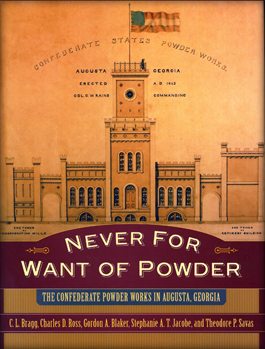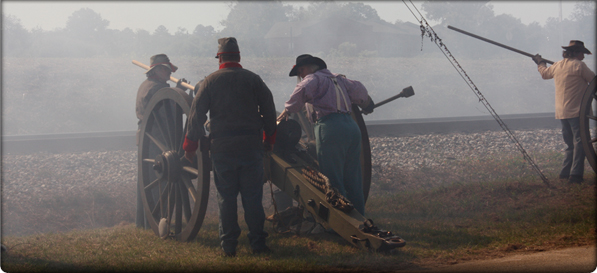Major Charles Shaler Smith designed the Confederate Powder Works. Work on the plant commenced in 1862 with materials gathered from the southern states including Georgia, Alabama, Tennessee, Virginia, and North Carolina. When completed, the 28 Powder Works structures lined the banks of the Augusta Canal for two miles. These were the only buildings ever constructed by the government of the Confederate States of America, and operated until the war’s end in April 1865.
The plant was a model of manufacturing efficiency, with raw materials entering at the first of 26 buildings and exiting the last as gunpowder. The most prominent building, the refinery, resembled the British House of Parliament. Directly in front of it was a tall smokestack in the shape of an obelisk, the only structure remaining today from the powder works.
During its lifetime, the Powder Works produced approximately 7,000 pounds of gunpowder per day for a final total of more than 3 million pounds. The Augusta Powder Works produced enough gunpowder to fully meet the needs of the Confederate armies and still retained a surplus of 70,000 pounds at the end of the war.
Other war industries established themselves on or near the Canal, making Augusta a critical supplier of ammunition and war material.

History of Powderworks available at the Augusta Canal Gift Shop.

